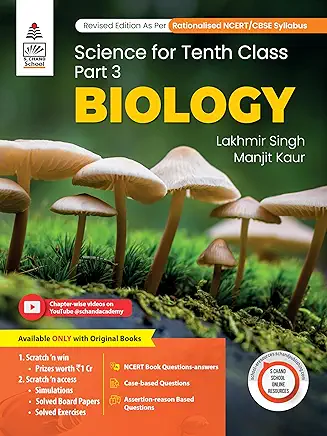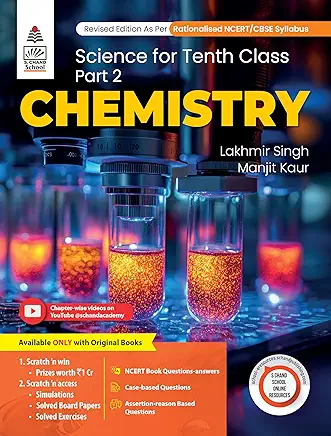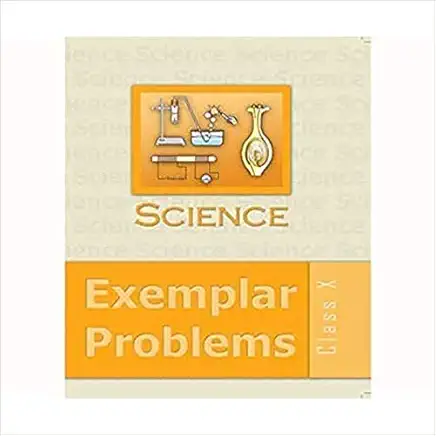CBSE Class 10 Maths: Chapter 1 Real Numbers - Part 1: MCQ
Welcome to Part 1 of our new 8-part series on Chapter 1, Real Numbers. This post contains the top 25 Multiple Choice Questions (MCQs) to help you master the fundamental concepts of HCF, LCM, and irrational numbers.
Recommended Books for Deep Practice
Top 25 MCQs - Real Numbers
Question 1: HCF & LCM Relation
The HCF of two numbers is 18 and their product is 12960. Their LCM will be:
HCF(a, b) × LCM(a, b) = Product of the two numbers
Given, HCF = 18 and Product = 12960
So, 18 × LCM = 12960
LCM = 12960 / 18
LCM = 720
Question 2: Prime Factorization
The total number of factors of a prime number is:
Question 3: HCF of Smallest Primes
The HCF of the smallest composite number and the smallest prime number is:
The smallest prime number is 2.
The smallest composite number is 4 (since 1 is neither, 2 is prime, 3 is prime).
Prime factors of 2 = 2
Prime factors of 4 = 2 × 2
HCF(2, 4) = 2
Question 4: Decimal Expansion
The decimal expansion of the rational number 14587 / 1250 will terminate after how many decimal places?
Denominator = 1250 = 125 × 10 = 5³ × (2 × 5) = 2¹ × 5⁴
The highest power is 4.
Therefore, the decimal will terminate after 4 places.
Question 5: Irrational Numbers
Which of the following is an irrational number?
(a) 3.1416 is a terminating decimal, so it is rational.
(b) 22/7 is in p/q form, so it is rational. (Note: It is an approximation of π, not π itself).
(c) √9 = 3, which is rational.
(d) π (Pi) is a non-terminating, non-repeating decimal, which is the definition of an irrational number.
Question 6: Fundamental Theorem
The HCF and LCM of 12, 21, and 15 respectively are:
12 = 2² × 3¹
21 = 3¹ × 7¹
15 = 3¹ × 5¹
HCF (Highest Common Factor) = Smallest power of common factors.
HCF = 3¹ = 3
LCM (Lowest Common Multiple) = Highest power of all factors.
LCM = 2² × 3¹ × 5¹ × 7¹ = 4 × 3 × 5 × 7 = 420
Question 7: Product of Primes
The number 140 can be expressed as a product of its prime factors as:
140 = 14 × 10 = (2 × 7) × (2 × 5) = 2 × 2 × 5 × 7 = 2² × 5 × 7
Question 8: Rational/Irrational Sum
The sum of a rational and an irrational number is always:
Question 9: Non-Terminating Decimal
Which of the following rational numbers will have a non-terminating repeating decimal expansion?
(a) 3125 = 5⁵ (Terminating)
(b) 8 = 2³ (Terminating)
(c) 455 = 5 × 7 × 13. Since it has 7 and 13 as factors, it is non-terminating repeating.
(d) 1600 = 16 × 100 = 2⁴ × 10² = 2⁴ × (2² × 5²) = 2⁶ × 5² (Terminating)
Question 10: HCF Application
Two tankers contain 850 litres and 680 litres of kerosene oil respectively. Find the maximum capacity of a container that can measure the kerosene oil of both the tankers when used an exact number of times.
850 = 85 × 10 = (5 × 17) × (2 × 5) = 2 × 5² × 17
680 = 68 × 10 = (4 × 17) × (2 × 5) = (2² × 17) × (2 × 5) = 2³ × 5 × 17
HCF = Smallest powers of common factors = 2¹ × 5¹ × 17¹ = 2 × 5 × 17 = 170
Question 11: LCM Application
The traffic lights at three different road crossings change after every 48 sec, 72 sec and 108 sec respectively. If they all change simultaneously at 7:00:00 a.m., at what time will they change simultaneously again?
48 = 16 × 3 = 2⁴ × 3¹
72 = 8 × 9 = 2³ × 3²
108 = 27 × 4 = 3³ × 2²
LCM = Highest powers of all factors = 2⁴ × 3³ = 16 × 27 = 432 seconds
Now, convert 432 seconds to minutes:
432 / 60 = 7 minutes and 12 seconds
They will change again after 7 min 12 sec.
New time = 7:00:00 + 0:07:12 = 7:07:12 a.m.
Question 12: Irrational Product
The product of two different irrational numbers is always:
Case 1 (Irrational): √2 × √3 = √6 (Irrational)
Case 2 (Rational): √2 × √8 = √16 = 4 (Rational)
Case 3 (Rational): (2 + √3) × (2 - √3) = 2² - (√3)² = 4 - 3 = 1 (Rational)
Since the result can be both, this is the correct choice.
Related Posts
Question 13: Nature of a Number
The number (5 - 3√2) is:
Question 14: n² - 1 Divisibility
If 'n' is any odd positive integer, then n² - 1 is always divisible by:
If n = 1, n² - 1 = 1 - 1 = 0 (Divisible by 8)
If n = 3, n² - 1 = 9 - 1 = 8 (Divisible by 8)
If n = 5, n² - 1 = 25 - 1 = 24 (Divisible by 8)
Algebraic Proof: An odd integer can be written as (2k+1) or (4q+1) or (4q+3).
n² - 1 = (n-1)(n+1). If n=2k+1, then (2k)(2k+2) = 4k(k+1). Since k(k+1) is always even, k(k+1)=2m. So, 4(2m) = 8m. It is always divisible by 8.
Question 15: Rational Form
The p/q form of 0.23 (with a bar over 23) is:
Multiply by 100 (since 2 digits are repeating):
100x = 23.232323...
Subtract x from 100x:
100x - x = 23.2323... - 0.2323...
99x = 23
x = 23 / 99
Question 16: HCF of 2ⁿ × 3² and 2² × 3³
If p = 2³ × 3² and q = 2² × 3³, then HCF(p, q) is:
p = 2³ × 3²
q = 2² × 3³
Common factors are 2 and 3.
Smallest power of 2 is 2².
Smallest power of 3 is 3².
HCF = 2² × 3²
Question 17: LCM of 2³ × 3¹ and 2² × 3²
If a = 2³ × 3¹ and b = 2² × 3², then LCM(a, b) is:
a = 2³ × 3¹
b = 2² × 3²
Factors are 2 and 3.
Highest power of 2 is 2³.
Highest power of 3 is 3².
LCM = 2³ × 3²
Question 18: Nature of (√2 - √3)(√2 + √3)
The number (√2 - √3)(√2 + √3) is:
Here, a = √2 and b = √3
(√2)² - (√3)² = 2 - 3 = -1
Since -1 can be written as -1/1, it is a rational number.
Question 19: Ending Digit 0
For any natural number 'n', the number 6ⁿ cannot end with the digit:
The prime factorization of 6ⁿ is (2 × 3)ⁿ = 2ⁿ × 3ⁿ.
Since the prime factors do not contain 5, 6ⁿ can never end with the digit 0.
Question 20: HCF of Co-primes
Two numbers are co-prime if their HCF is:
Question 21: LCM of Co-primes
The LCM of two co-prime numbers is always:
HCF × LCM = Product of numbers
1 × LCM = Product of numbers
LCM = Product of numbers
Question 22: Smallest Prime Factor
The smallest prime factor of the sum of the two smallest prime numbers is:
The smallest prime number is 2.
The second smallest prime number is 3.
Their sum is 2 + 3 = 5.
The number 5 is a prime number, and its smallest prime factor is 5 itself.
Question 23: Decimal Expansion of √3
The decimal expansion of √3 is:
Question 24: Terminating Decimal Condition
A rational number p/q has a terminating decimal expansion if the prime factorization of q is of the form:
Question 25: HCF × LCM
The HCF × LCM for the numbers 50 and 20 is:
Product = 50 × 20 = 1000.
Therefore, HCF × LCM must also be 1000.






